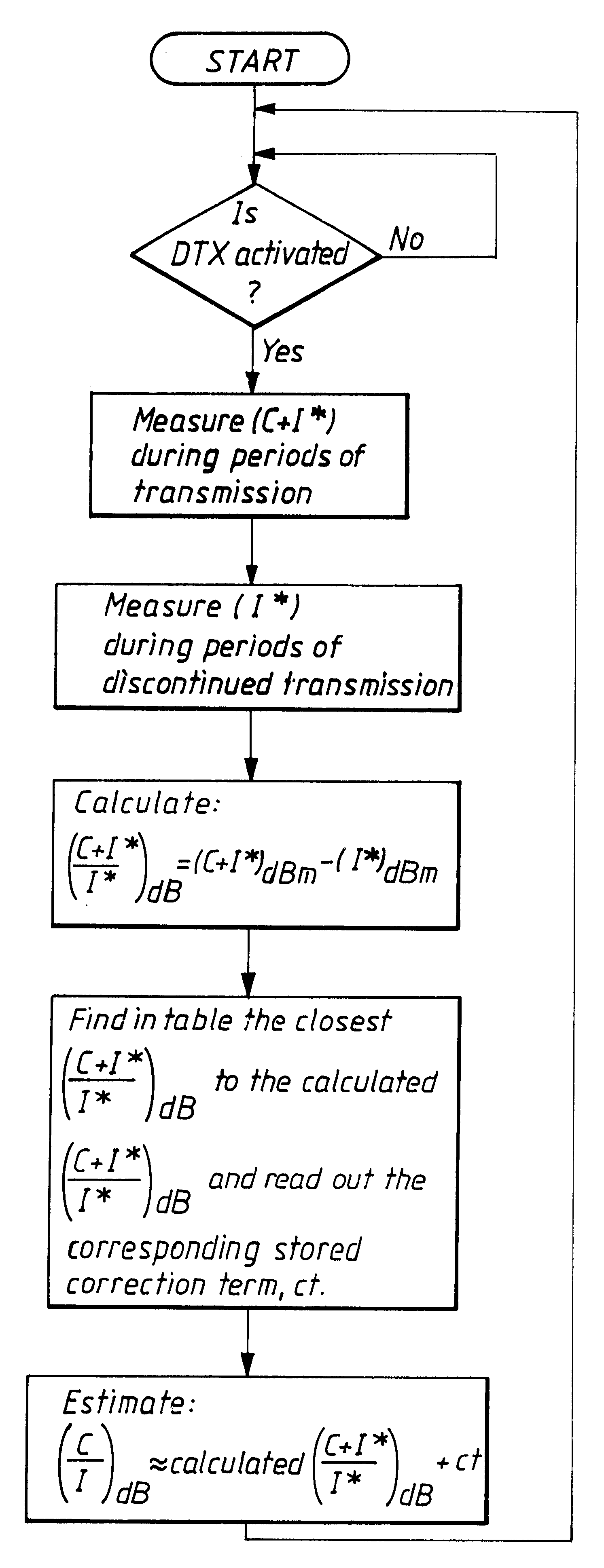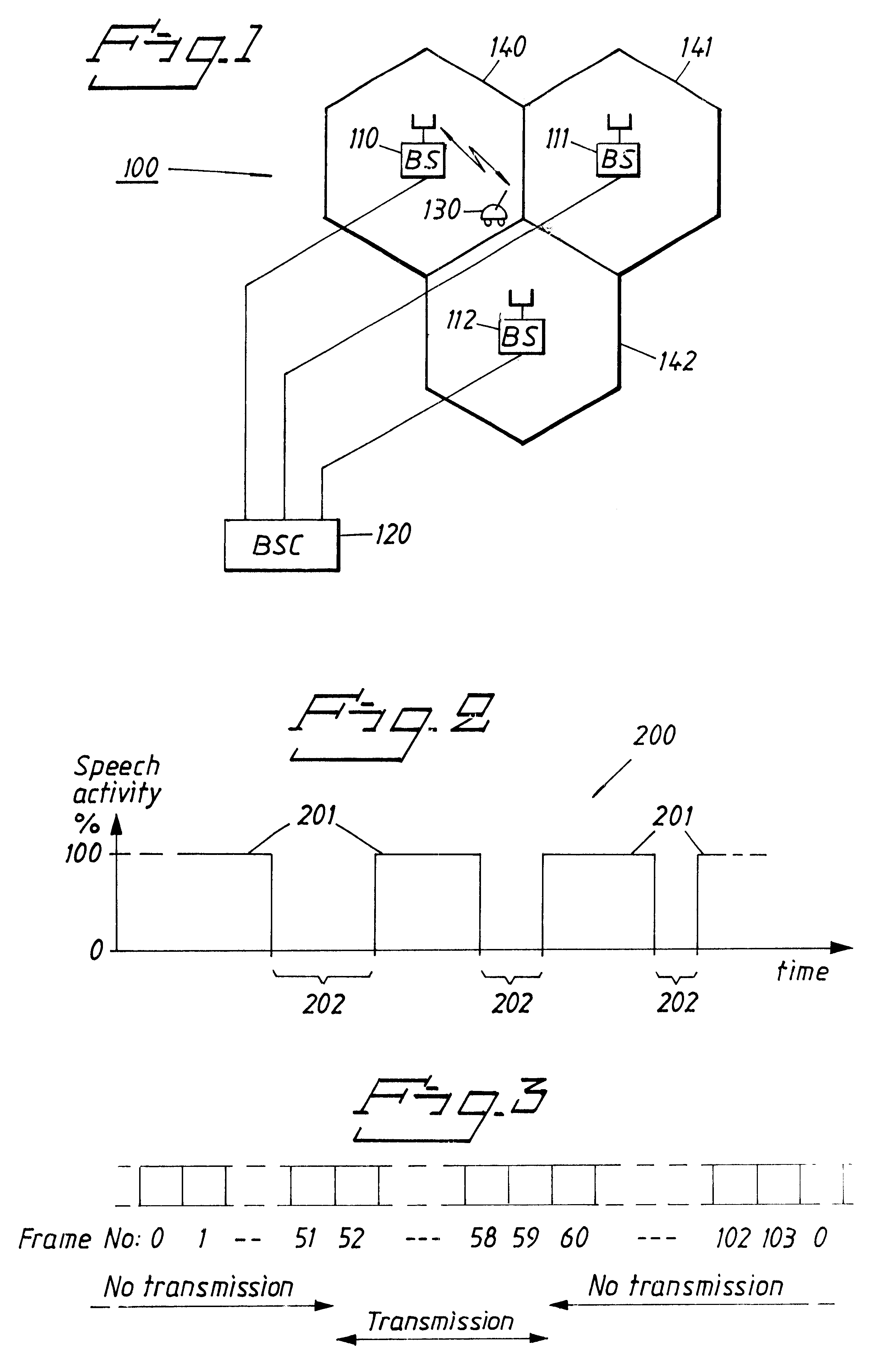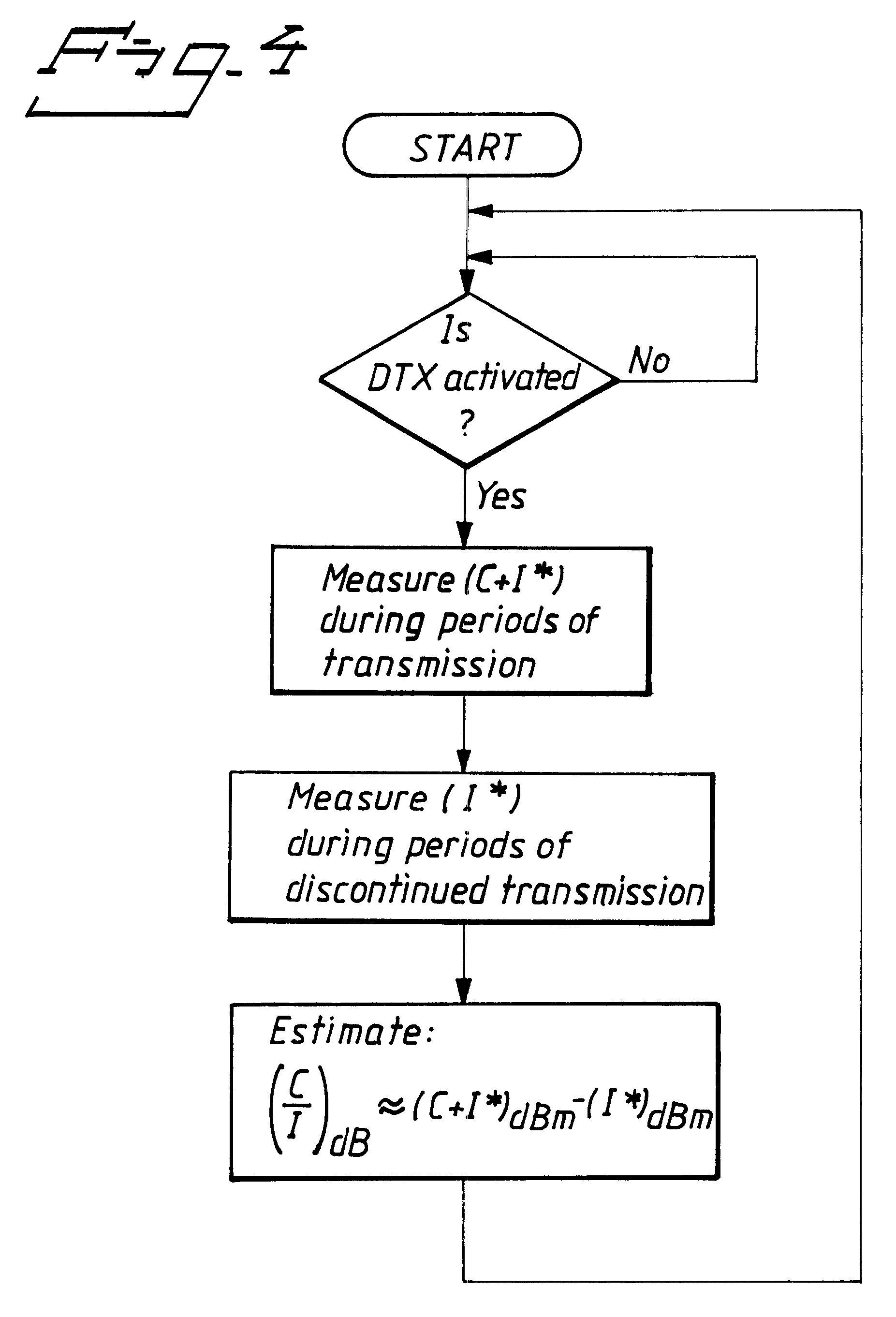Method and device for estimating a carrier-to-interference ratio in a radio communication system
a radio communication system and carrier-to-interference ratio technology, applied in the direction of signal quality detection, transmission monitoring, wireless commuication services, etc., can solve the problems of bit error rate, rough indication of transmission link quality, and inability to measure the quality of transmission link, etc., to achieve the effect of quick retrieval
- Summary
- Abstract
- Description
- Claims
- Application Information
AI Technical Summary
Benefits of technology
Problems solved by technology
Method used
Image
Examples
Embodiment Construction
While the following description is in the context of cellular communication systems involving portable or mobile radio telephones and / or personal communication networks, it will be understood by those skilled in the art that the present invention may be applied to other communication applications.
FIG. 1 illustrates a communication system 100 comprising a number of radio base stations, BS, 110, 111, 112 which are connected to a base station controller, BSC, 120 and a mobile communication device 130. The radio coverage by each base station 110, 111, 112 defines a cell 140, 141, 142. These cells are illustrated by hexagons in FIG. 1. Communication between a mobile communication device and a base station is established by a radio channel. Channel access is achieved by, for example, frequency division multiple access (FDMA), time division multiple access (TDMA), code division multiple access (CDMA) or combinations thereof.
Normally C / I is set to be equal to the ratio between the strength ...
PUM
 Login to View More
Login to View More Abstract
Description
Claims
Application Information
 Login to View More
Login to View More - R&D
- Intellectual Property
- Life Sciences
- Materials
- Tech Scout
- Unparalleled Data Quality
- Higher Quality Content
- 60% Fewer Hallucinations
Browse by: Latest US Patents, China's latest patents, Technical Efficacy Thesaurus, Application Domain, Technology Topic, Popular Technical Reports.
© 2025 PatSnap. All rights reserved.Legal|Privacy policy|Modern Slavery Act Transparency Statement|Sitemap|About US| Contact US: help@patsnap.com



